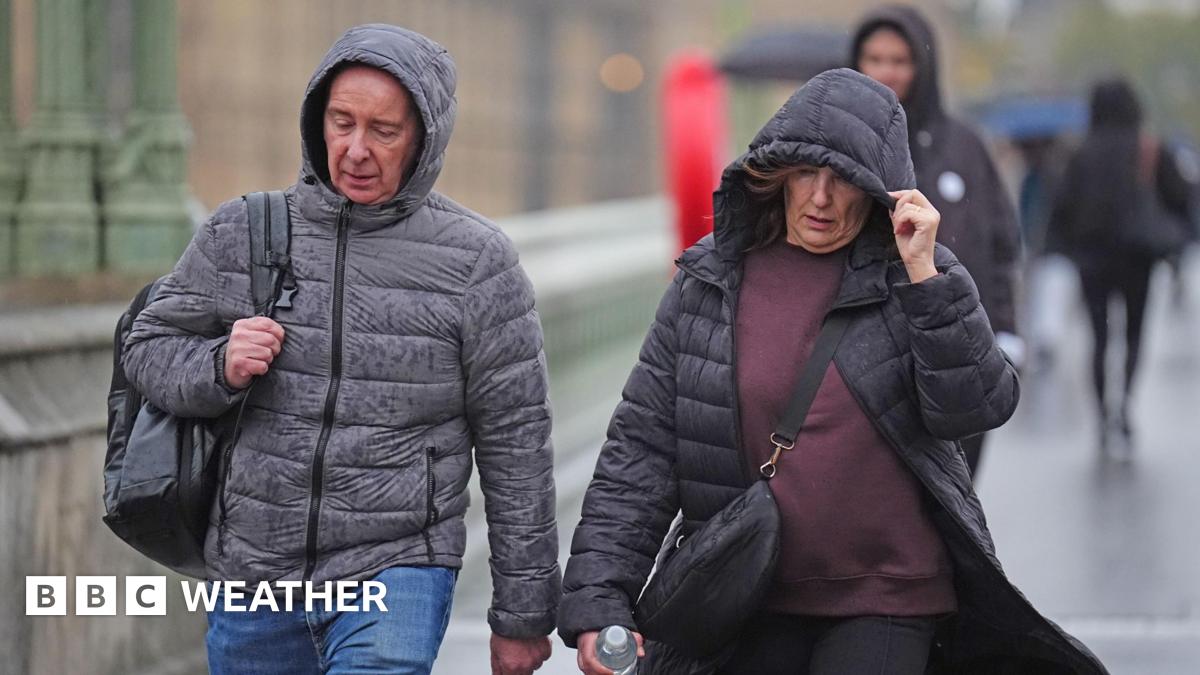Warnings after care leavers face increase in homelessness
Georgia RobertsPolitical Correspondent
 BBC
BBCYoung people leaving care in England face a sharper increase in homelessness compared to the population more broadly, latest figures show.
It comes after warnings the youngest care leavers face a “devastating care cliff”, which sees them losing support when they turn 18 and leave care, as well as difficulties with joblessness.
Children’s Commissioner for England Rachel De Souza told the BBC she was concerned the government were not providing care leavers with adequate long-term support.
The government said it was committed to “bold steps” to tackle homelessness.
The numbers of households with care leavers aged 18 to 20 threatened with homelessness in the past year increased by 9% on the previous year, and those already homeless and owed a relief duty grew by 6%.
On average in England among the general population, those threatened with homelessness increased by 0.3% and homelessness grew by 1%.
It follows a trend of homelessness among the youngest care leavers which campaigners say is growing more acute.
Last year’s figures show that homelessness among households with the youngest care leavers in England increased by 21%, compared to around a 12% more broadly.
A third of care leavers become homeless within the first two years of leaving care.
Homelessness Minister Alison McGovern said: “Everyone deserves a roof over their head, yet these figures show too many people are at risk.
“We are tackling the worst forms of homelessness and figures show we are reducing the worst forms of temporary accommodation with on-going reductions in B&B use.”
She pointed to the government’s Homelessness Strategy, saying the government was providing £1bn for social housing, and £39bn for affordable housing.
The Conservatives have been approached for a comment.
‘Terrifying’
Kerrie Portman has been homeless several times since she left care when she turned 18.
The 27-year-old was taken into care as a teenager having already experienced homelessness while under the care of her mum, who struggled with addiction.
Kerrie was in and out of supported and temporary accommodation, and children’s homes, where she says she experienced “severe abuse”.
She got a place to study at Cambridge University but, struggling to cope with a lack of support, she dropped out and found herself sleeping rough and going between squats.
“It was incredibly terrifying and incredibly traumatic and damaging,” she says.
“I didn’t have any sort of safety net, so I didn’t have any family to fall back on for support…being a woman I was obviously [also] more at risk.”
Kerrie would take long buses to avoid the streets, staying in McDonalds or sleeping in public bathrooms to try and stay safe – but still couldn’t escape abusive and violent situations.
She says that when it comes to applying for jobs, she is often dismissed for not having enough experience.
“I’ve never had the stability to be able to focus on work experience and that sort of thing, because when I’ve been experiencing chronic homelessness I’ve just been focused on survival.”
She is now completing an Open University course, her third attempt at sustaining study in higher education, and has had support in finding a suitable long term home.
But she fears for other young people who have had similar experiences grappling with life after leaving care, and the difficulties they face.
“All of the negative outcomes are rising. And then the more disadvantaged a person is, the more that leads to more disadvantage.”
Lack of safety net
While local authorities are legally obliged to provide some support for care leavers who leave the system at the age of 18, campaigners say the lack of safety net in terms of family, accommodation and other factors make them more vulnerable.
Clare Bracey, director of Policy, Campaigns and Communication at the charity Become, said the status quo was “unacceptable”.
“No child leaving care should face homelessness. At 18, they face a devastating care cliff where vital support vanishes and they’re expected to become independent overnight.”
Figures show 40% of the youngest care leavers in England aged 19 to 21 are not in education, employment or training – known as NEETs – compared to 15% for all young people in that category.
The government is concerned about the number of young people in this situation, and say the Youth Guarantee Scheme, which will offer paid work or apprenticeships to prevent long term unemployment among young people, will help those who have experienced care.
But there are calls from Labour MPs to keep in place some benefits for care leavers that the government have not committed to retaining as part of upcoming welfare reforms.
Last month, the education select committee called on the government not to cut the health element of Universal Credit for young care leavers as part of upcoming welfare reforms.
The government said no decisions have been made.

Children’s commissioner Rachel De Souza said the state acted as parent for care leavers, and so on issues such as housing and benefits, they needed priority.
“I think we need to push really hard,” she said.
“I’m not confident…because Westminster is not very good at thinking about the long-term realities of young people’s lives when the fixes are not easy.”
She has called for priority in housing for the 50-60,000 care leavers between the ages of 17 to 21, and for benefits to reflect the fact that a care leaver needs to set up home and pay for bills.
‘Get the basics in place’

Labour MP John Whitby has fostered 26 children over two decades.
He has been pressing ministers to consider giving younger care leavers the same rate of Universal Credit received by those over 25, pointing out they would have the same obligations an older claimant.
But he also said he was worried about the “flat lining” of foster parents available.
“Obviously children who’ve been in care, they don’t do as well as regular children, but the longer they’re in foster care the better they do….something we’ve always tried to think about with the children who live with us is sort of that aspirational element,” he said.
He said he hoped some recent pilot schemes taking place as part of the Children’s Wellbeing and Schools Bill, boosting the support network for care leavers for staying in accommodation and education, are rolled out across the country.
“If the basics are in place, then they’re not being evicted, then they can concentrate on the things they need to do, which is either get their education or training or job or whatever it is – much more aspirational things.
“You’ve got to have the basics in place.”



